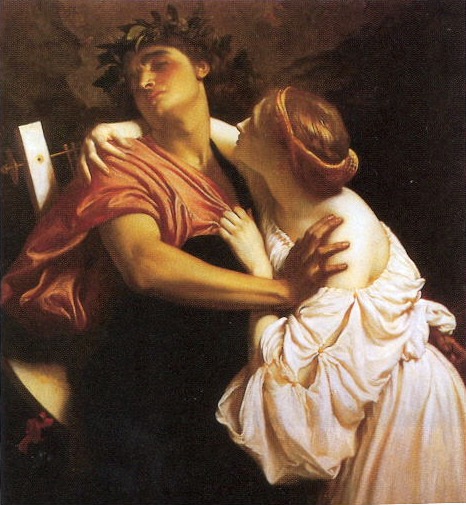Miami Beach Classical Music Festival closes with a worthy “Orfeo”
The Miami Beach Classical Music Festival continued its ninth season with Claudio Monteverdi’s L’Orfeo, performed Saturday afternoon at the Faena Forum.
Premiered in 1607 at the ducal palace in Mantua, L’Orfeo is the earliest example in the genre of opera that is currently performed regularly around the world. The plot of this five-act opera is based on the Greek legend of Orpheus who descends into the underworld, Hades, to bring back from the dead his bride, Euridice.
Monteverdi incorporates elements of musical interludes that were popular between scenes and acts of plays in the transition of the Renaissance and Baroque eras. He masterfully sews together dramatic recitatives, strophic songs, lyrical and virtuosic arias, chorus and dance numbers, and sprightly instrumental interludes. With great ease he intertwines in the texture moments of complex polyphony, as in the duets of La Musica and La Speranza, and the canonic entrances of the different chorus parts.
Use of instrumentation in Monteverdi’s time was often left open to what was available and what suited the needs of the production. And so, in this fashion, the institute’s orchestra was a small chamber ensemble with strings, synthesized harpsichord, trumpet, English horn, and harp. Conductor Sandra Lopez Neill (a vocal performance lecturer at the Frost School of Music), who also worked with the singers on their vocal preparation, led the ensemble and singers in a stylistically sound performance.
Her tempo choices, ornamentations, and gestural articulations matched the various demands of the dramatic development of the story line. At times the cadential points in the recitatives accompanied by the harpsichord were slightly rushed, not allowing for the phrases to properly taper off. With limited instrumental forces however, the musicians were able to achieve contrasting shades of color, especially when accompanying the pastoral scenes of Thrace versus the hellish ones of Hades.
Orfeo would prove a challenging role for any professional, and as a young singer, Russell Spence handled himself quite well in the title role. There was sufficient range in his performance to oscillate emotionally between the light-heartedness of the wedding or pastoral scenes as compared to the harrowing darkness of his journey into and out of Hades.
Even though the timbre of his voice is quite light, he aptly captured the essence of Orfeo’s heartbreaking plea to Caronte in “Possente Spirito.” Unfortunately lacking was clarity of diction due to Spence’s cloudy enunciation, with vowels too open, and shallow vocal projection.
In the roles of both Caronte and Plutone, bass Benjamin Elliot showed good control of the brooding phrases and projected assertive vocals. He successfully switched his demeanor between the devilish contorted movements as Caronte into the stoic stance as Plutone.
Two other soloists that stood out were Gabrielle Haigh as Euridice and Katherine McKay as The Messenger. Haigh’s voice had a sweet tone layered with just enough vibrato for the style. Her voice floated gently in the surrounding space, while the melodic flourishes were spun with clarity and agility.
Soprano McKay was especially captivating in the second act, as she delivered the news that Euridice had died in her arms from a poisonous serpent’s bite. She carried the weight of this news in the inflections of the lyrics, emphasizing suspensions to heighten the pain that these words were inflicting on Orfeo.
The remaining soloists also contributed with solid performances: Brandon Flores as Apollo and Willow Macol as Prosperina both displayed rich voices and appropriate portrayals of their characters. Diana Bodie as Ninfa collaborated well in the ensemble numbers. Allyson Clare Twohy (La Musica) and Megan Jacobs (La Speranza) had a few tentative moments in their duets, and their solo fragments were delivered with confidence if not always clear diction.
The staging by Corinne Hayes, with costumes by Paulina Lozano, was set to resemble an ancient Greek amphitheater where the audience is as much part of the work as the performers. The production fit the minimal nature of the space, while the closeness with the audience in this circular setting was overall effective and engaging.
L’Orfeo will be repeated 5 p.m. Sunday with the second performance of Britten’s A Midsummer Night’s Dream at 2 p.m. miamimusicfestival.com
Posted in Performances
Leave a Comment
Sun Jul 24, 2022
at 1:07 pm
No Comments
